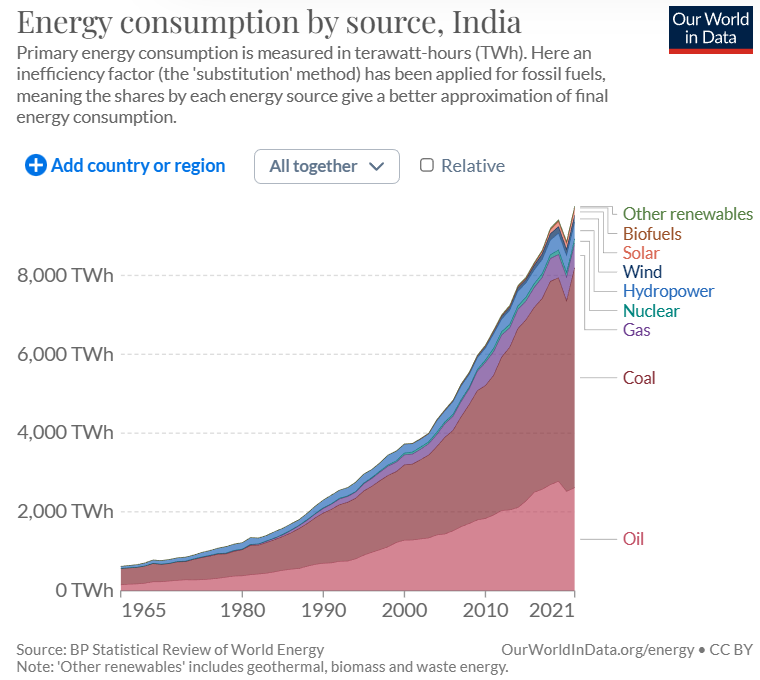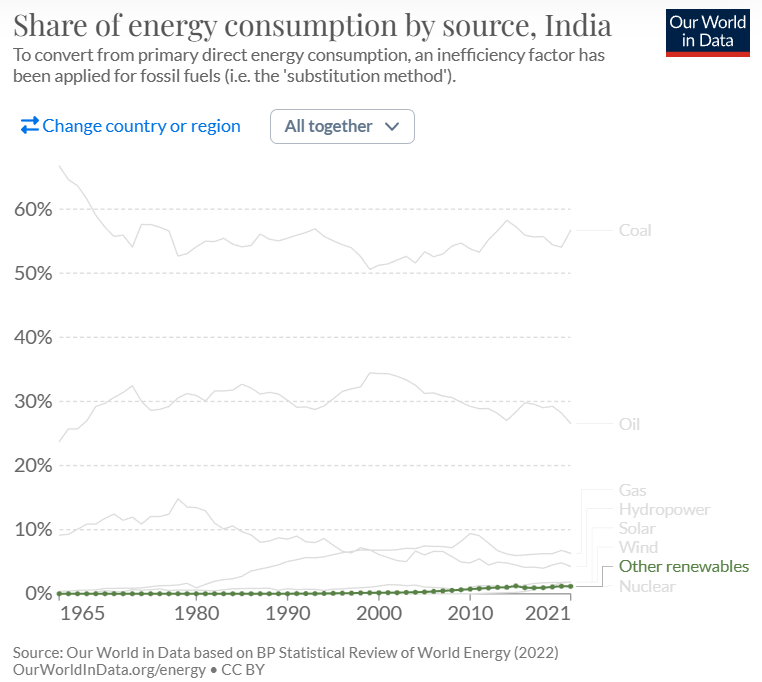
Policymakers around the world are currently engaged in finding and promoting ways to increase the share of renewable resources to fight climate change. There is a disproportionate focus on developing renewable energy resources, but solely shifting to renewable energy will not achieve the long-term sustainability target. Several issues are not receiving the required attention such as solar cell disposal, habitat fragmentation and disruptions caused by wind and hydel projects.
Adequate attention is not given to the environmental sustainability in some renewable energy technologies. Additionally, challenges related to cost, infrastructure, integration, information availability, and energy storage further complicate the transition to renewable energy resources. It is crucial that policymakers shift their focus away from renewable energy sources and explore alternative practices for the mitigation of environmental and energy-related issues. This article seeks to discuss some alternative practices that can be equally effective in climate crisis mitigation as setting of renewable energy sources.


READ I Sustainable FDI: Impact of climate risks on investments
War on climate change: Alternative strategies
- Policymakers should promote energy efficiency through technological innovations and practices. Encouraging communities to adopt energy-efficient appliances in their daily lives is essential. Incentives should be provided to endorse the benefits of using such appliances. Use of energy-efficient electric appliances and improved building insulation techniques can reduce energy consumption and carbon emissions significantly. Conducting routine energy audits in residential, commercial, and industrial spaces will help identify consumption patterns and any inefficiencies. Appropriate measures can then be taken to address these issues and promote green building practices.
- The adoption of circular economy practices should be encouraged to ensure resource efficiency through efficient product take-back plans. Developing a reverse logistics infrastructure is crucial to facilitate the return of products at the end of their life cycle. Technologies like big data analytics and AI can monitor the product take-back process, enabling the design of performance metrics for advanced data management and traceability. Organizations can incentivize customers through discounts, rewards, and loyalty programs to endorse product take-back plans. Enforcing strong legislation and regulations that promote circular business models is equally important.
- Sponsoring innovations in Carbon Capture and Storage (CCS) should be considered as an alternative. Continuous research and development programs, supported by governments, should encourage technologies that directly capture carbon dioxide from the air and from industrial processes like oil and gas, cement, and steel production. Carbon capture techniques can combine effectively with bioenergy production to cut greenhouse gas emissions and to help facilitate the transition to a low-carbon economy. Success in CCS would enhance energy security by reducing reliance on imported fossil fuels and stimulate economic growth through various opportunities. Implementing sustainable carbon pricing and market mechanisms, supported by a strong policy foundation and international collaboration, is crucial to address CCS challenges. But CCS should be employed as a complementary technology rather than a standalone solution for climate change mitigation.
- Development of sustainable transportation is an effective way to minimise the harmful impact of the sector on the environment. Expansion and maintenance of public transportation systems require heavy investments, particularly in the developing world. This can be achieved by increasing the frequency and coverage of services. Policymakers should endorse carpooling, ride-sharing, and implement various pricing and economic measures to reduce traffic congestion and promote alternative modes of transportation. It is also crucial to offer financial incentives and tax breaks to boost the adoption of low-emission technologies such as EVs, hydrogen fuel cells, and hybrids. Furthermore, it is essential to improve additional infrastructure to support environmentally friendly transportation modes such as walking, cycling, and more. This approach would facilitate the integration of additional infrastructure with the public transportation system, promoting sustainable travel patterns. Investing in such infrastructure will not only enhance energy efficiency and environmental benefits but also improve health, boost tourism and recreational activities, and foster connectivity among communities.
These alternatives also play a vital role in maintaining environmental harmony through appropriate land management practices, reforestation efforts, and conservation initiatives. They contribute to preserving biodiversity, capturing carbon emissions, and mitigating the overall harmful impacts of climate change. Lastly, but most importantly, it is crucial to raise awareness and educate communities about the successful implementation of the alternative practices discussed above. This can be achieved through campaigns, social media, seminars, workshops, education, and advertisements.
(Dr Moinak Maiti is an author and independent researcher.)
